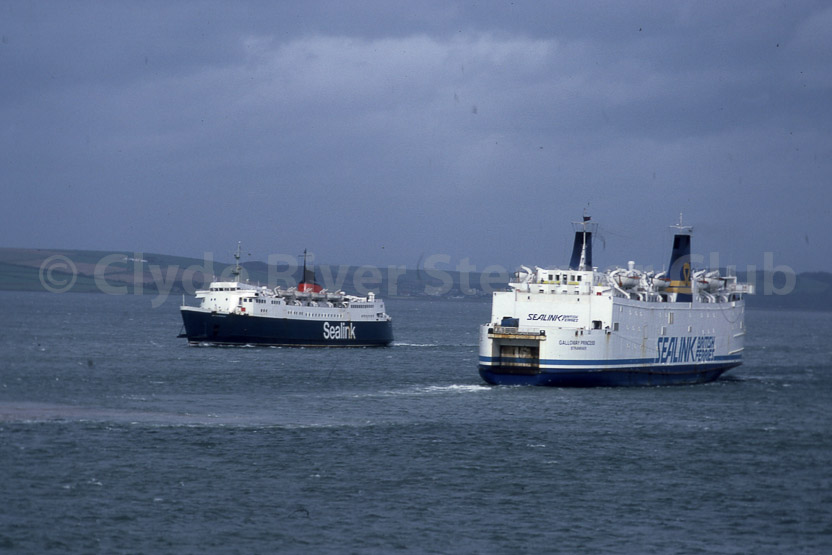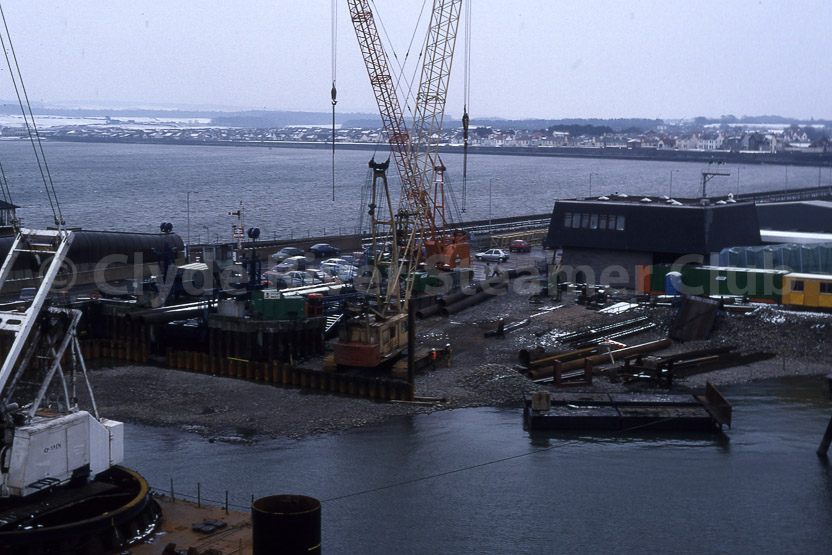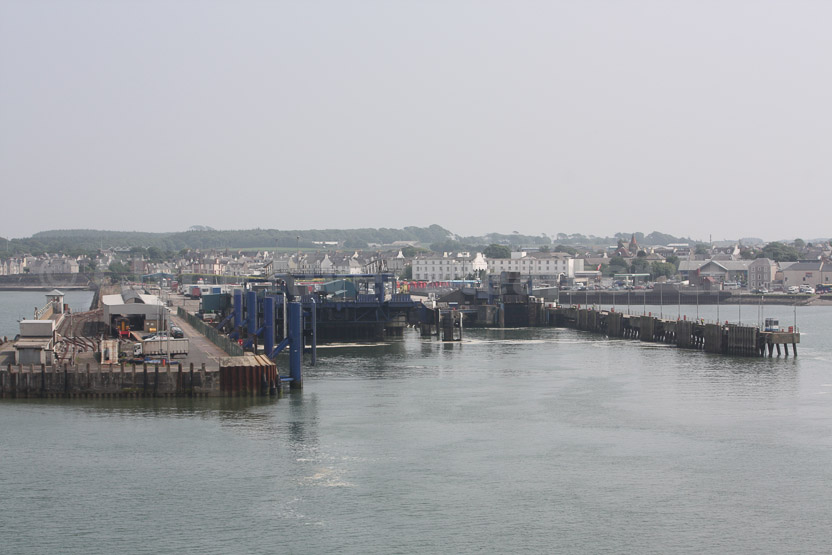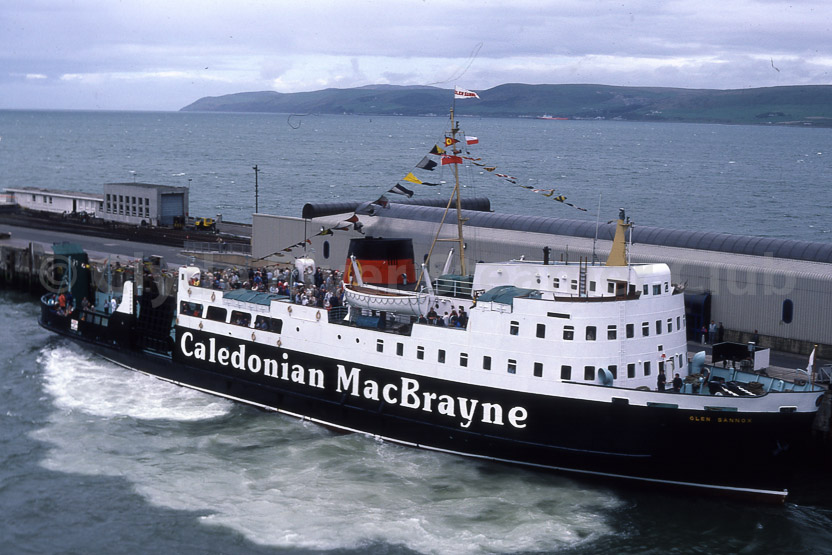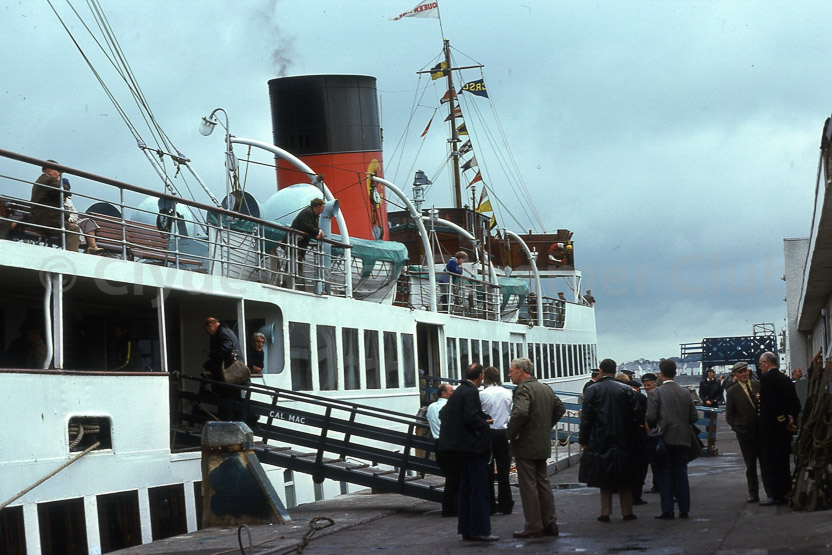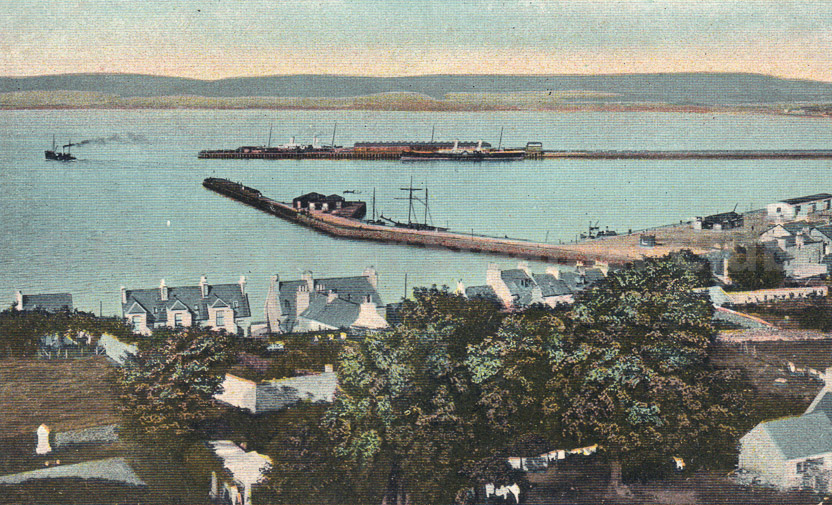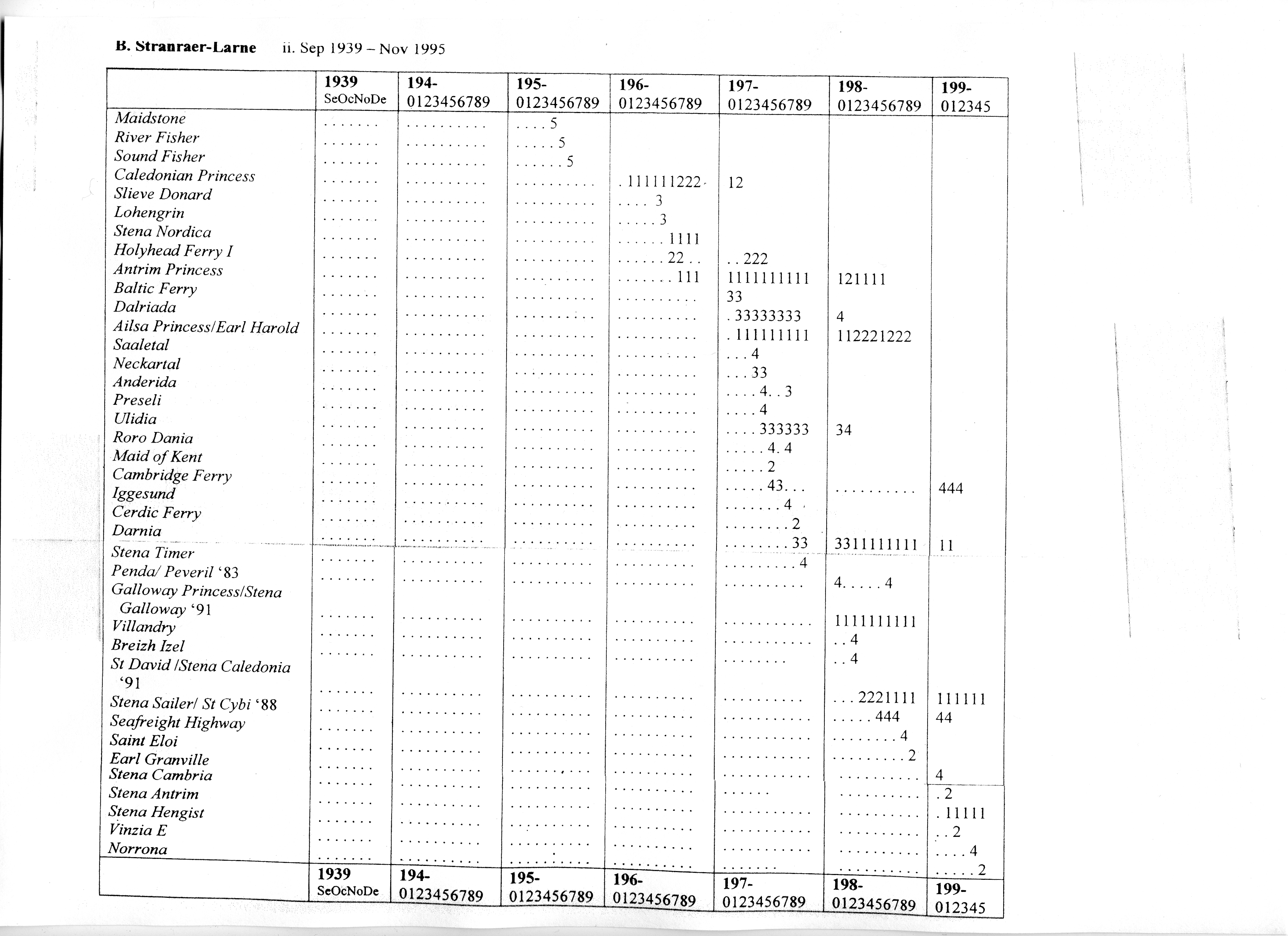Fraser MacHaffie and Captain Murray Paterson
The second meeting of the Club’s 2012-13 winter session at Jurys Inn took place on Wednesday 14 November under the title “Stranraer – 150 years plus or minus”. There were two speakers – Fraser MacHaffie and Captain Murray Paterson, both longstanding Club members and each, in his own way, an authority on the short sea crossing from Stranraer to Larne. Fraser wrote the definitive book on the subject (The Short Sea Route, Stephenson & Sons, 1975), and Murray spent 32 years of his distinguished shipping career on the run, before continuing in semi-retirement as deputy harbourmaster at Loch Ryan Port. Each brought his particular brand of expertise to the evening, Fraser’s comprehensively researched historical approach complementing Murray’s practical experience and humour.
The story continued through the problematic Princess Louise of 1872 and the Princess Beatrice of 1876 to the four ships named Princess Victoria – the first a 20-knot Denny paddler, which began a daily schedule of two round trips on 1 May 1890, with rail connections. The second, in 1912, was part of the early turbine era (the others being the Princess Maud of 1904 and, briefly in 1911, the CSP turbine Duchess of Argyll of 1906).
Fraser explained that while the early Stranraer boats undertook occasional excursions (mainly to Campbeltown and Rathlin Island), these were dropped after 1935 due to pressure on the main route. By then the service was in the hands of the Princess Margaret (1931) and the Princess Maud (1934): the latter ship, although longer and beamier than her older sister, cost £20,000 less to build thanks to the impact of the Great Depression.
The third Princess Victoria (1939) was revolutionary not so much for her diesel propulsion, more for her incorporation of a car deck and stern ramp. She became a wartime victim – mined at the entrance to the Humber, with the loss of 36 crew – and among the ships taking her place at Stranraer were three Clyde turbines, the Glen Sannox, Duchess of Montrose and Duchess of Hamilton, for which a certificate for 250 civilians and 400 troops was issued. The crosstrees on the latter’s aft mast – a feature of her post-war appearance – were fitted to carry two black discs that had to be displayed when negotiating the entrance to Larne Harbour.
Instead of detailing the familiar story of the fourth Princess Victoria (1947) and her loss in 1953, Fraser focused on the way warnings had been brushed aside about her stern gate, only five feet high, and the susceptibility of the car deck to flooding. Two comparative photographs of the Clyde ferry Arran showed that lessons were learned. As built in 1953, she had a mere handful of freeing ports on her car deck; as modified later, she had many more.
Then, soon after the introduction of the Antrim Princess and Ailsa Princess, came dedicated cargo ships – the Dalriada (1971) and Darnia (1977) – and an increasing number of occasional visitors, including the Stena Baltica (1966) and the Mona’s Queen (1972). The 1980s saw the introduction of Sealink’s Harland & Wolff-built ‘Saint’ class ships, all four of which served on the run at one point or other; and the 1990s brought the twin-hulled SeaCat Scotland.
At this point of the evening’s proceedings, Fraser MacHaffie handed over seamlessly to Captain Murray Paterson, whose intimate knowledge of ships of the past 30 years quickly became apparent. He said the Darnia had a reputation for rolling, especially when rowdies were aboard: the captain would simply decide that the ship’s stabilisers were not working.
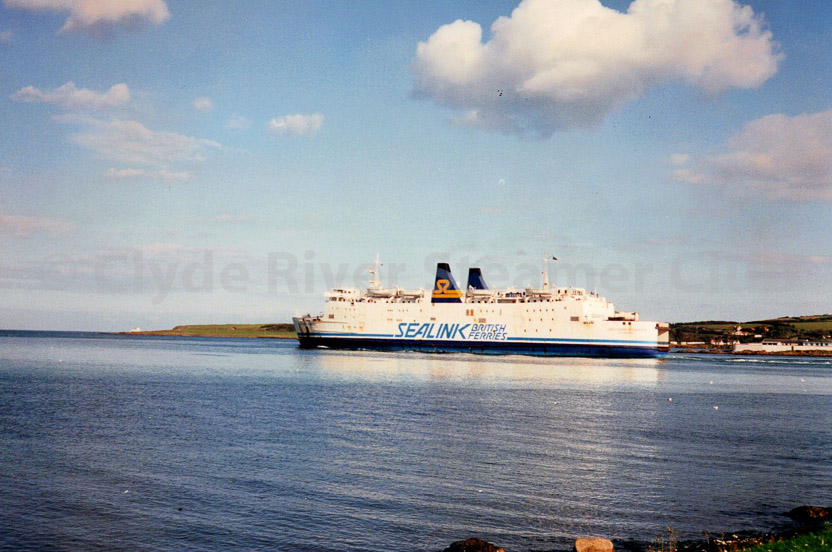 |
 off Cairnryan on 7 June 1992-Edit.jpg) |
|||
| Galloway Princess leaving Larne on 30 September 1988 | SeaCat Scotland (1992) off Cairnryan on 7 June 1992 |
The privatisation of Sealink in 1984 gave rise to the “galloping maggot” motif on funnels and a white livery that quickly revealed rust. There followed a succession of new owners, logos, names – and on-board working systems, especially after the Herald of Free Enterprise disaster of 1987. But, Murray continued, “one of the biggest shocks to the system was the introduction of SeaCat Scotland”, the route’s first twin-hulled boat, followed by the Stena Voyager with a service speed of 42 knots. Such craft may be limited in what they can do in bad weather, said Murray, but their speed, and the commercial development of Belfast Harbour, prompted the end of the Larne link and the gradual withdrawal of conventional ships.
“New kids on the block” at the new Stena Terminal
Recently arrived from refit in Poland, Stena Superfast VII and VIII
going through familiarisation and work-up procedures before entering service
The completion in November 2011 of an up-to-date ferry terminal at Old House Point, seven miles down Loch Ryan from Stranraer, signalled the end of ferry services from the Wigtownshire port.
Having first visited Stranraer on 15 May 1965, Murray was on board the Stena Caledonia when she drew away from the pier for the last time, at 4.30 on the morning of 21 November 2011.
Despite ending on a note of sadness, Murray’s talk was full of wry observations that prompted much laughter. It was a vintage CRSC night, attended by more than 100 members and friends. Angus Ross gave the vote of thanks.
A selection of other images of the Short Sea Crossing is shown below and the CRSC thanks those responsible for making them available.
For those not familiar with the website facilities, click on a thumbnail to open a larger image – you can then click forward (right) and back (left) through the whole collection by hovering the mouse to the right or left of the larger image and clicking the left mouse key. This saves continually going back to the smaller images and opening up a larger version each time.
To round off the record of the Stena vessels which closed the service from Stranraer Town in November 2011 – below are pictures of Stena Caledonia’s sailing partners on the route as the service came to a close
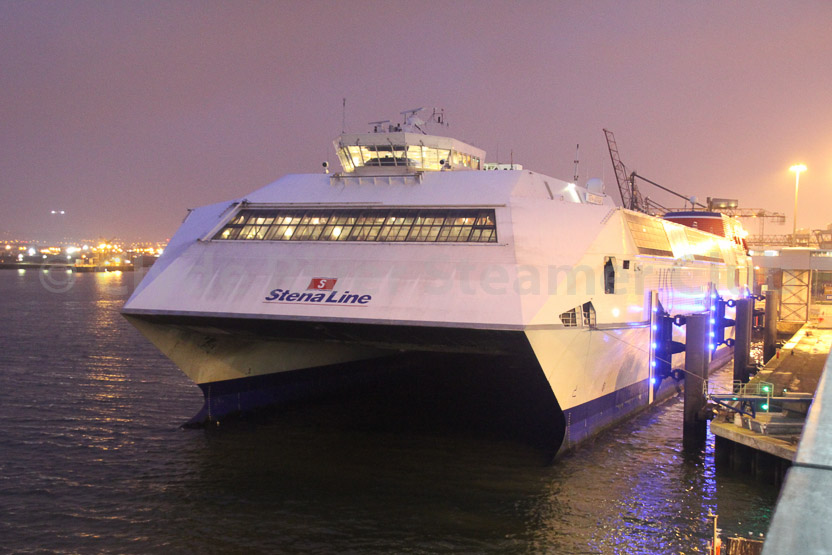 |
 |
|||
|
HSS Stena Voyager at Belfast
8th November 2011
|
Stena Navigator heading for Belfast 8th November 2011 |
The following images are scans of documents prepared for the meeting which give details of the ships which sailed on the route over the 150 years, and the periods during which they sailed.












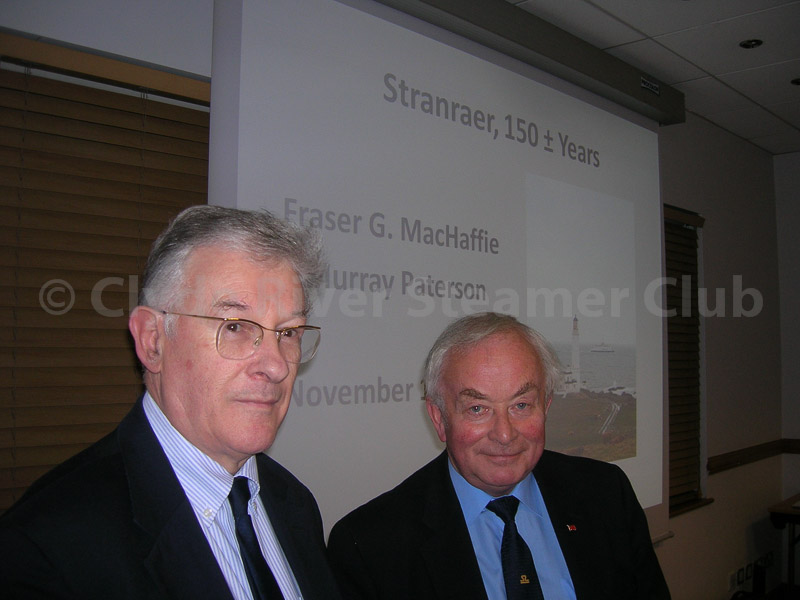

 aground at Stranraer-Edit.jpg)
 at Stranraer-Edit.jpg)
-Edit.jpg)
 at Larne in the late 1930s-Edit.jpg)
 on trials on the Skelmorlie Mile-Edit.jpg)
 car deck during fitting-out at Dumbarton-Edit.jpg)
 at Stranraer, showing her trend-setting lions-Edit.jpg)
 at Stranraer on 6 September 1969, with Duchess of Hamilton-Edit.jpg)
-Edit.jpg)
 was one of a new breed of vehicle and freight ferries_edit_.jpg)
 under way in her early years on the short sea route-Edit.jpg)


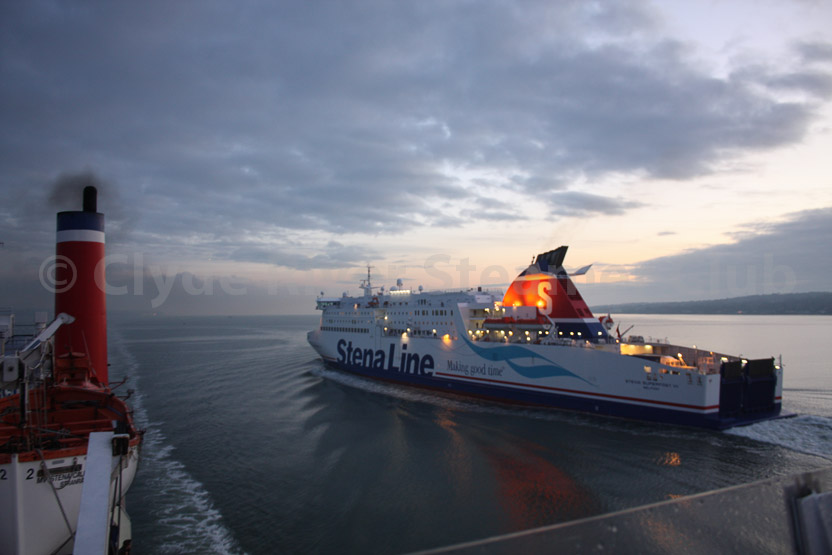

-Edit.jpg)
 at Stranraer-Edit.jpg)
 before the First World War-Edit.jpg)
 after the First World War-Edit.jpg)
 at Stranraer-Edit.jpg)
 heading up Loch Ryan-Edit.jpg)
 in Garvel Graving Dock, Greenock-Edit.jpg)
 at Stranraer in the late 1950s-Edit.jpg)
 in Hong Kong, renamed Macau-Edit.jpg)
 under way-Edit.jpg)
 passing Corsewall Lighthouse-Edit.jpg)
-Edit.jpg)
%20showing%20the%20low%20stern%20gate-Edit.jpg)
 at Dumbarton-Edit.jpg)
 at Gourock shortly after being handed over to her owners-Edit.jpg)

 at Dumbarton-Edit.jpg)
 at Stranraer-Edit.jpg)

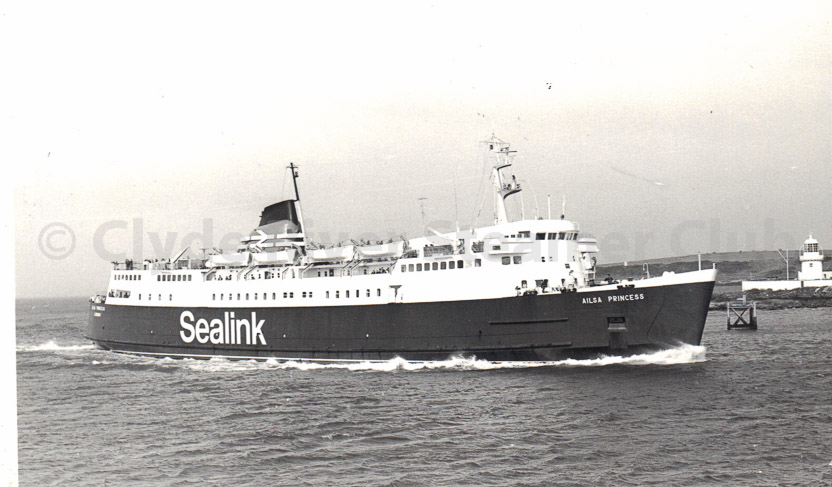

 in Loch Ryan on 4 November 1985-Edit.jpg)
 off Cairnryan on 7 July 1977-Edit.jpg)
_edit_.jpg)
, one of several imported ferries that proved useful on the Short Sea Route-Edit.jpg)
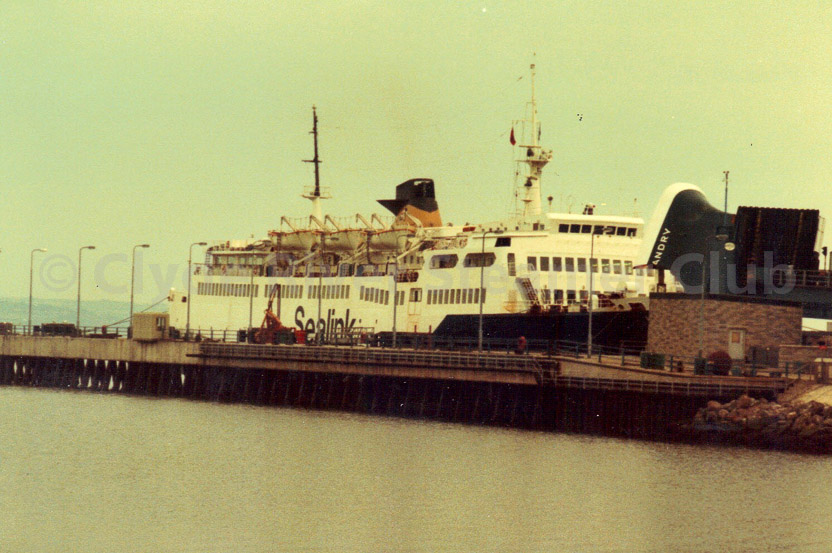
 on 31 August 1986, one of several Isle of Man ferries to visit Stranraer-Edit.jpg)
 off Cairnryan on 7 June 1992-Edit.jpg)
 off Bowling in April 1980-Edit.jpg)

 off Cairnyan on 7 June 1992-Edit.jpg)
_edit_.jpg)
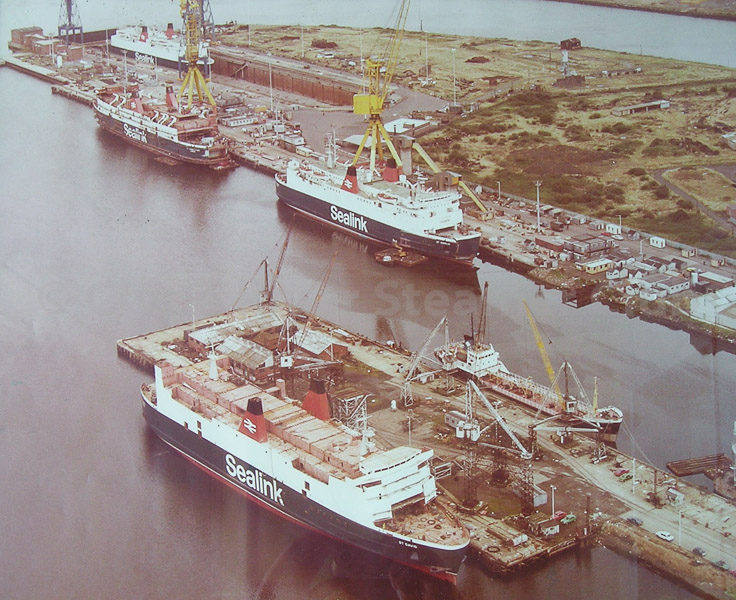
-Edit.jpg)


